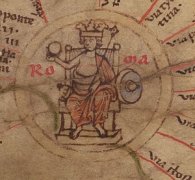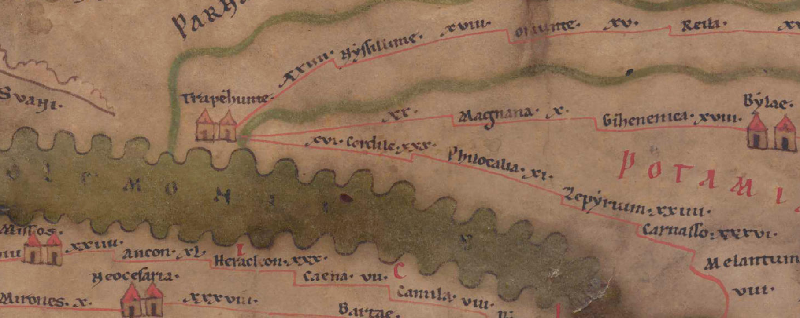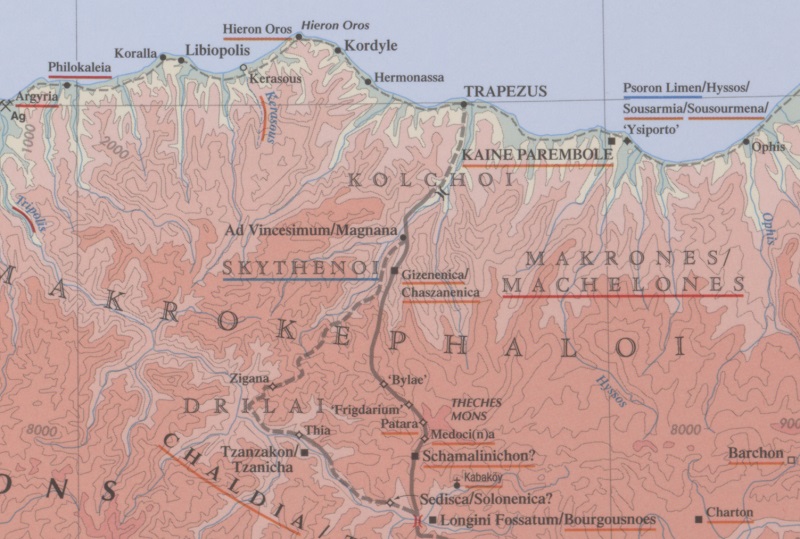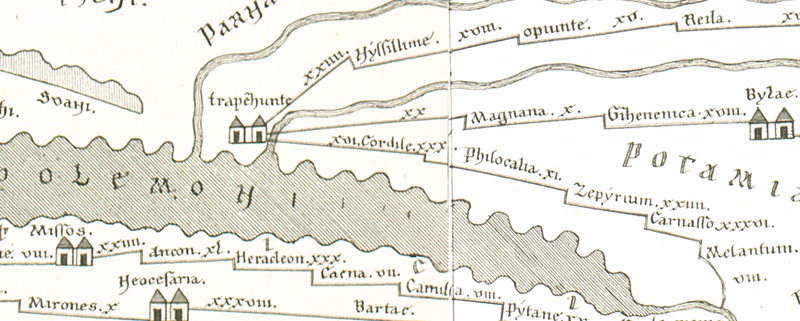
Tabula Peutingeriana – Single display of hits
| Toponym TP (renewed): | Cordile |
| Name (modern): | bei Akçakale |
| Image: |  To the image detail |
| Toponym before | XVI Trapezunte |
| Toponym following | XXX Philocalia |
| Alternative Image | --- |
| Image (Barrington 2000) |
 |
| Image (Scheyb 1753) |
 |
| Image (Welser 1598) | --- |
| Image (MSI 2025) | --- |
| Pleiades: | https://pleiades.stoa.org/places/857199 |
| Area: | Asia Minor |
| Toponym Type: | Toponym, no Symbol |
| Grid square: | 9A3 |
| Toponym Color: | black |
| Vignette Type : | --- |
| Itinerary: |
|
| Alternative Name (Lexica): |
|
| Name A (RE): | Kordyle 1 |
| Name B (Barrington Atlas): | Kordyle (87 E3) |
| Name C (TIR/TIB/others): |
|
| Name D (Miller): | Cordile |
| Name E (Levi): |
|
| Name F (Ravennate): | Cordule (p. 29,40; p. 92,15 ) |
| Name G (Ptolemy): | Χορδύλη (Χορδύβη), v. l. s. Kommentar (5,6,6) |
| Plinius: |
|
| Strabo: |
|
| Dating from Toponym on TP: | Roman Imperial Period (2nd century) |
| Argument for Dating: | In der Literatur erstmals belegt bei Arrian (ca. 131 n. Chr.). Die Namensform ist eher spät. |
| Commentary on the Toponym: |
Lag in Wirklichkeit östl. von 9A3 Philocalia an der Südküste des Schwarzen Meeres, an der aber auf der TP kein Platz mehr war. |
| References: |
Bryer, A. A. M./Winfield, D. C.: The Byzantine monuments and topography of the Pontos, Washington DC 1985, 10; 153; 156; 158. |
| Last Update: | 10.09.2025 19:20 |
Cite this page:
https://www1.ku.de/ggf/ag/tabula_peutingeriana/trefferanzeige_en.php?id=1536 [last accessed on November 14, 2025]